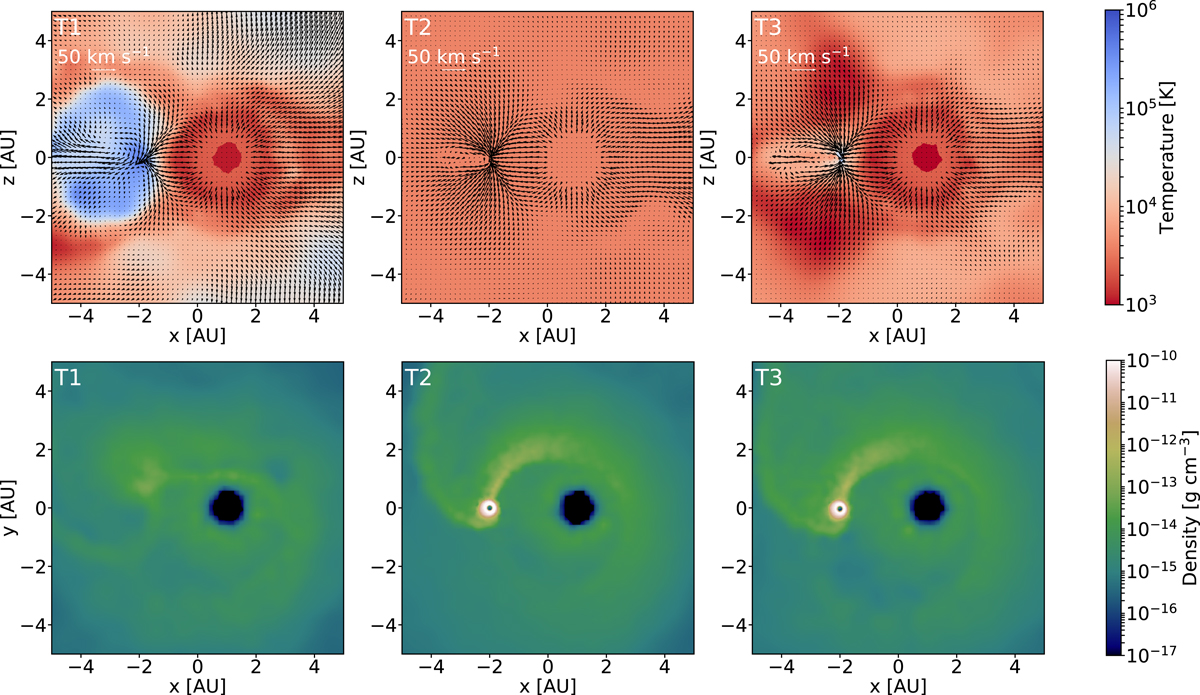Fig. 1.

Top: flow structure in the y = 0 plane for different EoS after 7.5 orbits. The colourmap shows the temperature at y = 0. The white arrow on top of the velocity field plots corresponds to the magnitude of a 50 km s−1 velocity vector. In the three images we can observe the wind leaving the donor star radially at x = 1 AU. The accretor star is located at x = −2 AU. For model T1, the temperatures reached in the region near the companion star are very high preventing material to settle into an accretion disk. Bottom: gas density in the orbital plane (z = 0) is shown. The accretor is located at x = −2, y = 0, and the AGB star at x = 1, y = 0. In the middle panel we see that for the isothermal EoS (T2) gas in the vicinity of the accretor settles into an accretion disk. When cooling is included (T3), an accretion disk around the companion is also formed.
Current usage metrics show cumulative count of Article Views (full-text article views including HTML views, PDF and ePub downloads, according to the available data) and Abstracts Views on Vision4Press platform.
Data correspond to usage on the plateform after 2015. The current usage metrics is available 48-96 hours after online publication and is updated daily on week days.
Initial download of the metrics may take a while.


